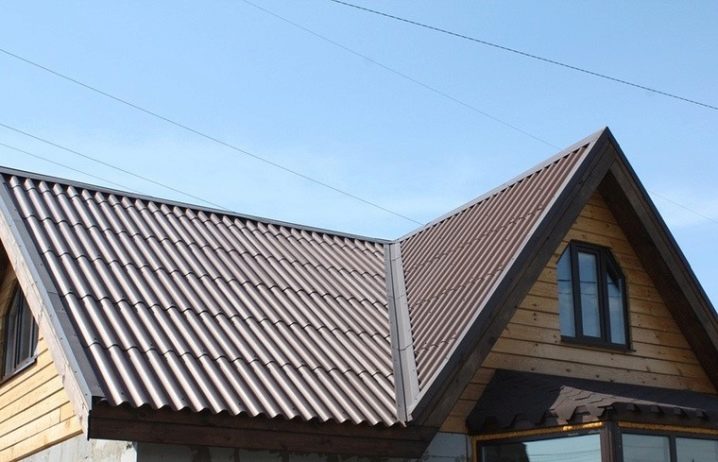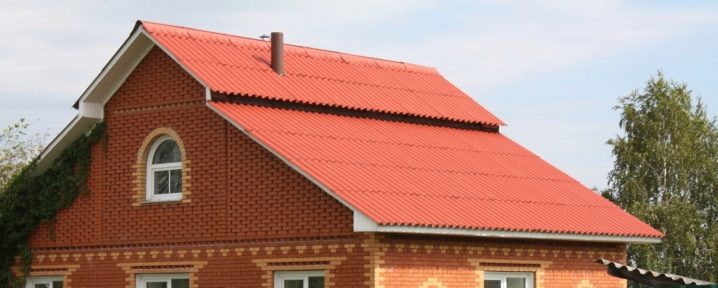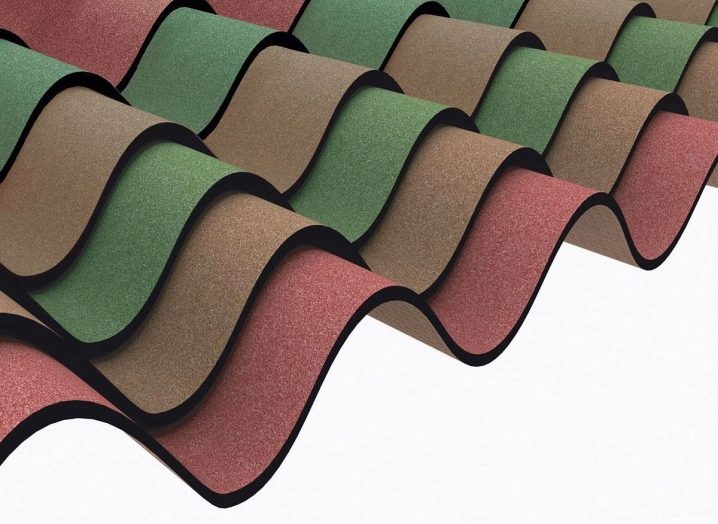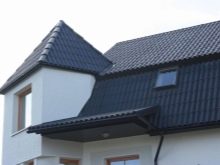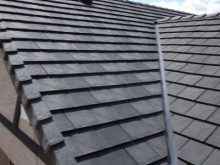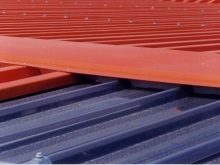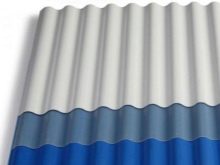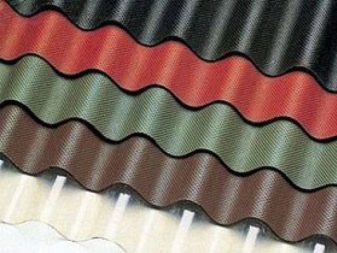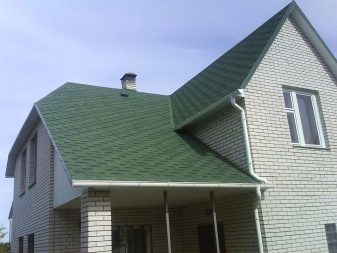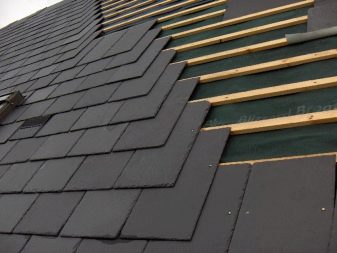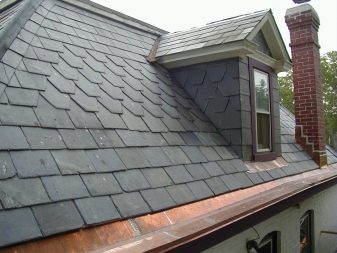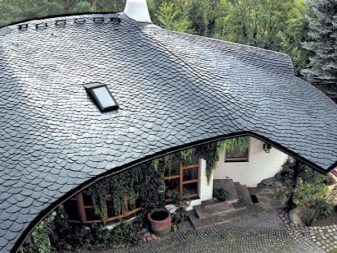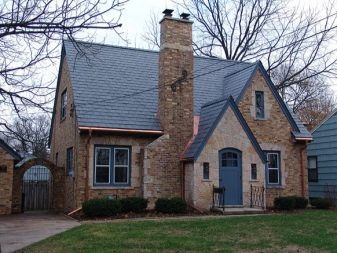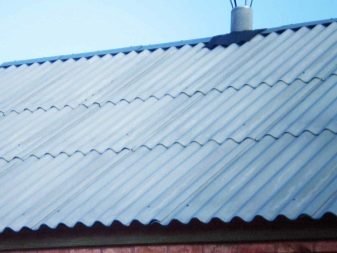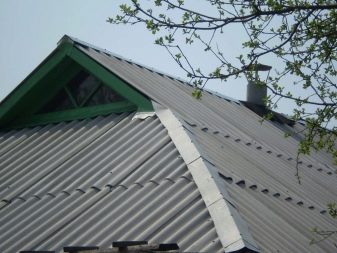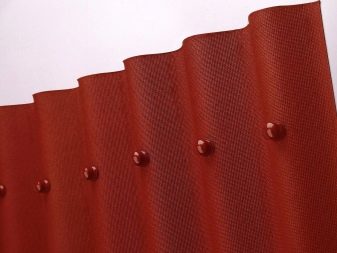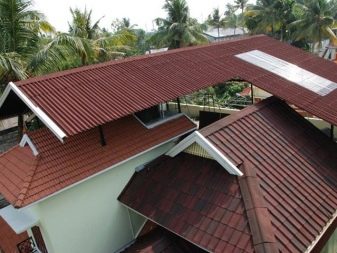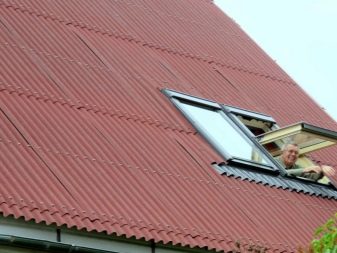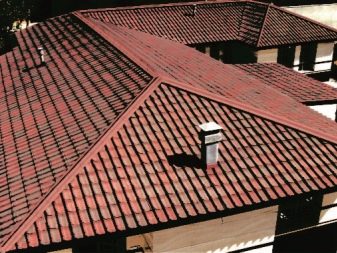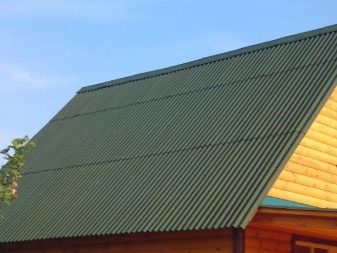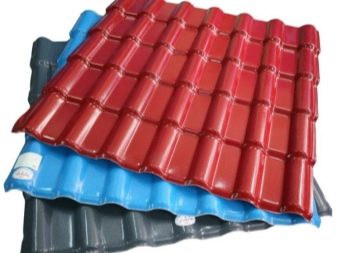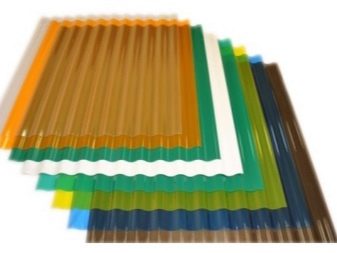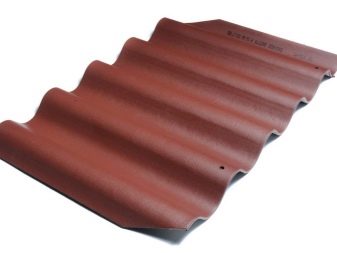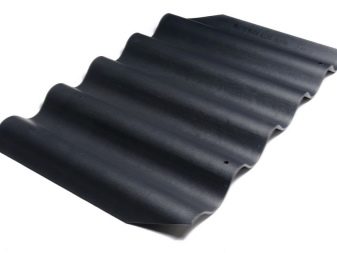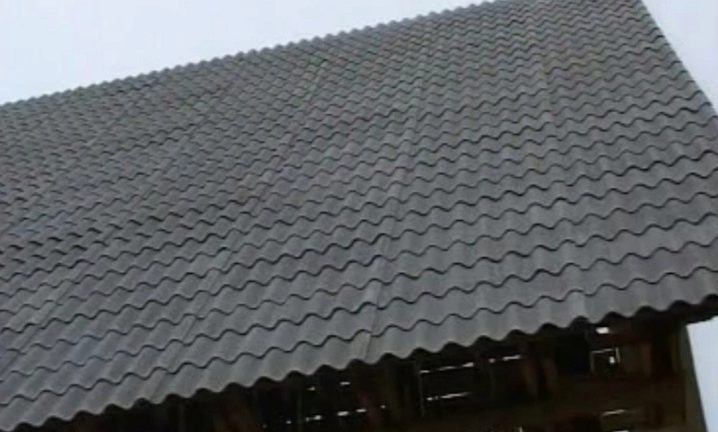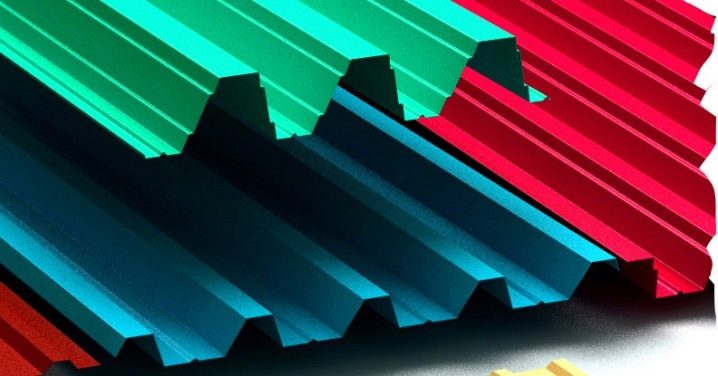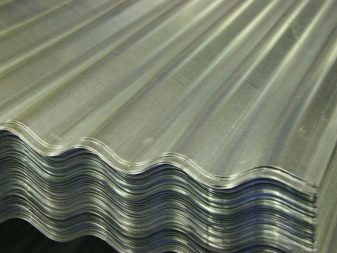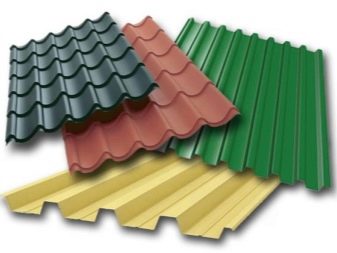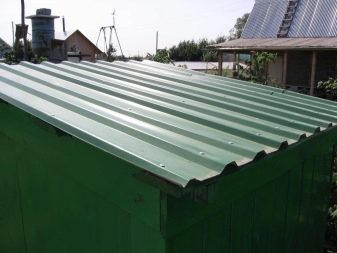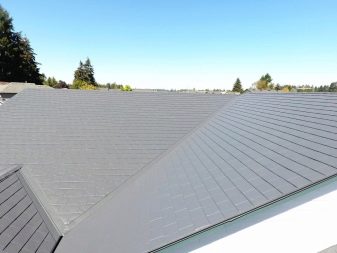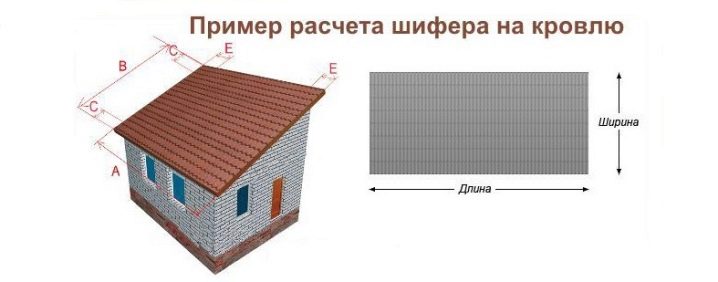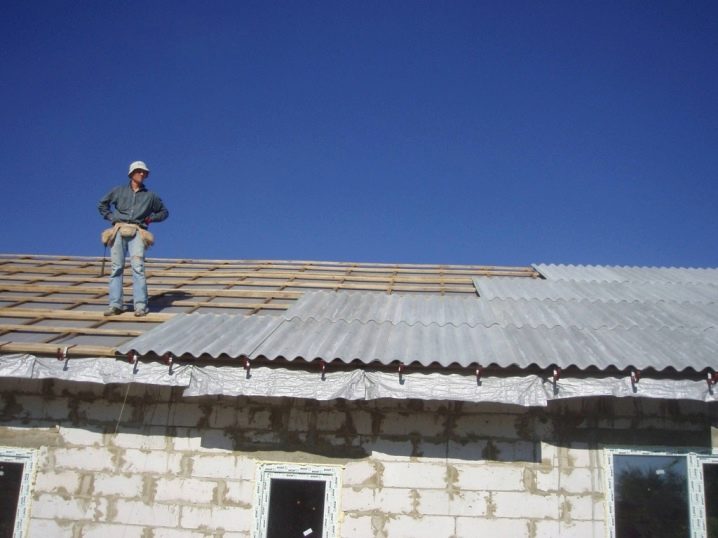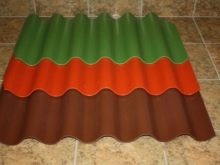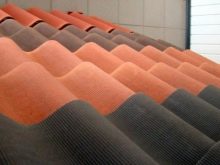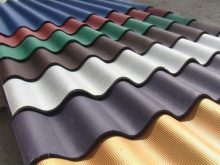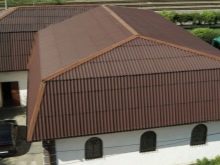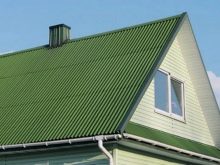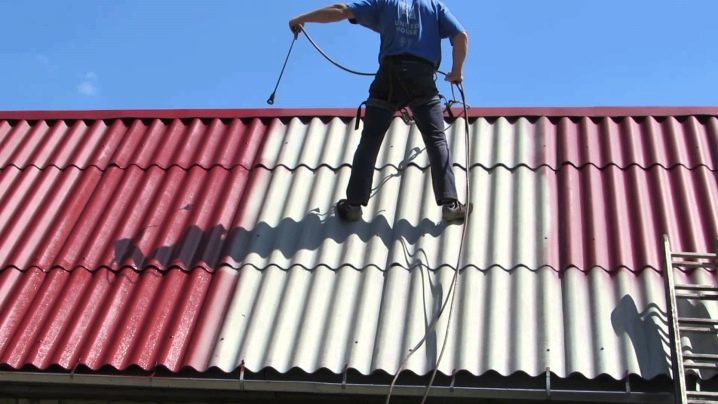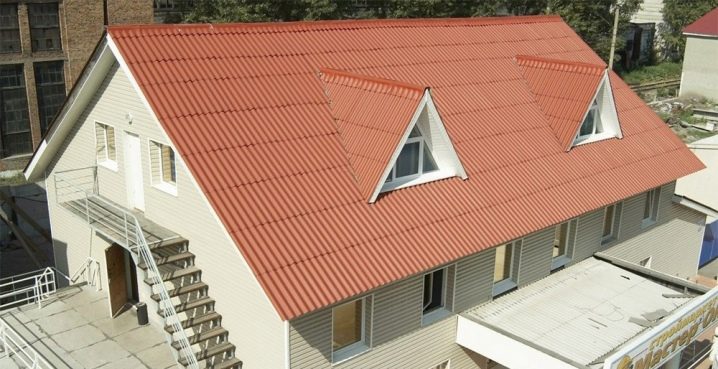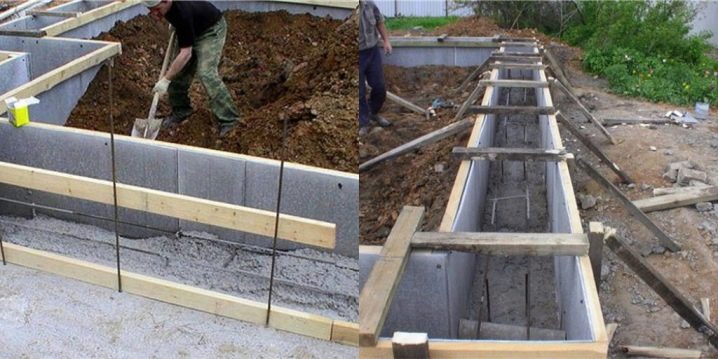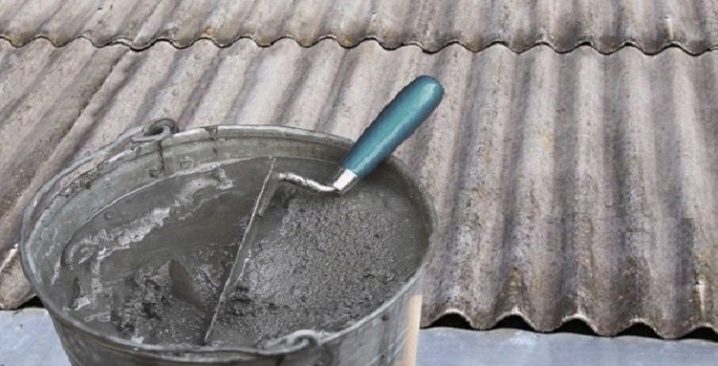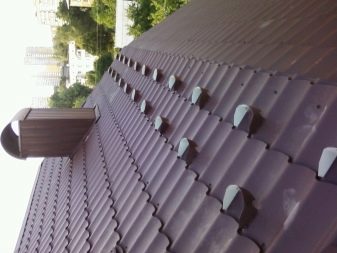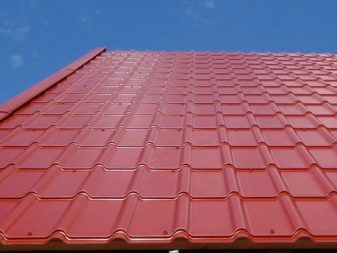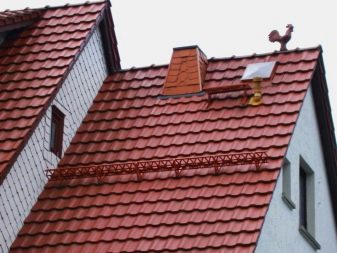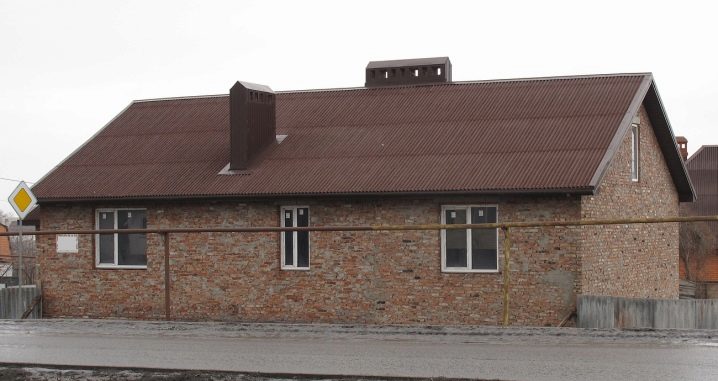Slate: types and applications
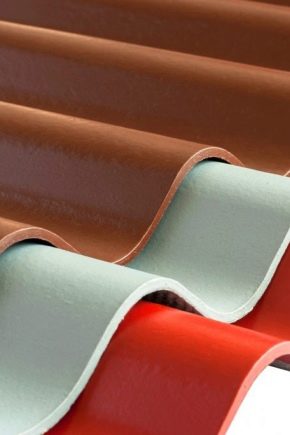
One of the most popular building materials is still slate. It has different applications and over the years is considered one of the most affordable roofing materials. Modern slate, its varieties and applications are quite diverse, so in the process of choosing all this must be taken into account. A professional approach to the choice of this material will ensure the reliability and durability of the roof, which will create the most comfortable conditions for being indoors.
Features and application
Slate does not lose its relevance and occupies a high position in the global market. Advanced technologies allow not only to produce classic versions of this material, but also more modern models. That is why the slate roof looks not only beautiful, but also very neat.
The production process can use components such as ordinary or Portland cement or asbestos. It should be noted that the level of carcinogenicity of asbestos specimens directly depends on the minerals in their composition. Experts recommend using such slate exclusively for external use, and it is better to refuse to use it indoors, as it is quite harmful to health.
The best solution is portland cement slate. This is such a building material that fully complies with the standards of GOST and, in comparison with other options, has a high level of resistance to moisture, as well as mechanical damage and fire. The folding and transportation of finished products is carried out with the help of special equipment,intended for such purposes. This allows you to maintain the integrity of the material while maintaining the original qualities of products.
Slate with a bituminous coating, which in comparison with such material as polycarbonate, is much better and more durable, enjoys wide demand in the Russian Federation and other countries of the world. The weight of this roofing material is quite light, and the texture lends itself well to cutting, which makes the installation process as simple and convenient as possible. It is often used to create a roof or as partitions.
Due to its unique texture, this type of slate has become widely demanded in various fields. It is actively used not only as a roofing material, but also for the purpose of creating various decorative compositions in gardens or parks.
Varieties: Pros and Cons
Depending on the material, slate is divided into certain types. The most popular is rubber, plastic and euroslate. Each of these materials has its own individual characteristics.
- Rubber slate made from rubber waste and fiberglass.Such roofing fiberglass material is intended for use on roofs with any forms. Its advantages are: good elasticity, as well as ease and ease of installation.
Among the shortcomings can be identified: a low level of frost resistance and resistance to fire.
- Plastic slate It is made using PVC or polycarbonate. It is a fiberglass material with a transparent and translucent structure, which is presented in a variety of colors and can be either straight with a smooth surface, or in the form of a trapezoid or waves. The positive aspects of this material are: light weight, resistance to fading, fire resistance and a wide color palette. The disadvantage here is the difficulty of installation.
It should be noted that such a roof makes the room as light and effective as possible.
- Euroslate It is made from cellulose fiber, it is characterized by a polymer sanding composition with a fairly dense texture. The advantages of such a roofing material are: presentable appearance, high level of sound insulation and resistance to moisture,as well as light weight and good flexibility. The disadvantages are: instability to sunlight and the difficulty in cleaning the surface.
Each of the varieties of slate has its advantages and disadvantages, which are recommended to be taken into account in the selection process.
Slate
This type of slate is a shale plate, which have individual shapes and sizes. Mostly the color gamut of this material is presented in gray and gray-blue, but there are also products in green and brown tones. Due to the fact that this slate is asbestos-free, it is actively used to create roofs in luxury homes. Such roofs look truly unique and original, giving the houses a special beauty and originality.
The main positive characteristics of shale roofing material are as follows:
- presentable appearance;
- unique structure;
- increased resistance to adverse effects;
- excellent noise insulation and low thermal conductivity;
- durability.
Negative factors include:
- high price;
- great weight.
The immaculate appearance and the incomparable quality of slate slate make it a widely sought-after roofing material, not only when arranging the roof in large cottages, but also in smaller houses.
Asbestos
Such roofing material as asbestos slate is made from water, cement and asbestos. The composition of these components provides a gray color sheets, but if necessary, they can be safely painted.
The advantages of asbestos slate include:
- ease of installation;
- affordable cost;
- long service life;
- good resistance to high and low temperatures;
- strength.
Disadvantages include:
- big weight;
- fragility.
Asbestos slate is perfect for use as a roofing material outside. It is believed that the asbestos in its composition is harmful to the human body, therefore, these products are intended for use only outside, in well-ventilated areas.
Ondulin
This slate is a soft roofing material for the manufacture of which is used cellulose, mineral additives and bituminous impregnation.His corrugated sheets are quite flexible, making it convenient to work with him as much as possible. An important feature of this slate is a multilayer structure consisting of 14 layers. Such production technology provides excellent quality of the material, its practicality and versatility.
The advantages of ondulin slate are:
- acceptable cost;
- reliability;
- ease of use;
- high sound insulation;
- beautiful and neat appearance.
The disadvantages are:
- fast ignition;
- burnout under the influence of sunlight.
It should be noted that ondulin slate is considered the best solution for the design of roofs with complex shapes and configurations. Its rich color is capable of making even the most primitive room as bright, stylish and beautiful as possible.
Plastic
Transparent polymeric slate made of PVC or polycarbonate is mainly used as a roof of mansards, greenhouses, pavilions or sheds. As a roofing material for residential buildings, it is completely unsuitable.
The main advantages of plastic slate include:
- strength;
- frost resistance and moisture resistance;
- transparency;
- a light weight;
- wind resistance.
The disadvantage is the ability to expand when exposed to high temperatures.
Such roofing material is in great demand. It is presented in a wide range of colors, so that everyone has the opportunity to choose the most suitable option, taking into account individual wishes and needs.
Rubber
Modern rubber slate is made using fiberglass and rubber waste. It is mainly used as a roofing material for small buildings and in its features has some similarities with asbestos-cement products.
The advantages of this material are:
- small weight;
- strength;
- ease of operation.
The disadvantages are:
- fast fire;
- low level of frost resistance.
Sometimes it happens that this type of slate is used as a roofing material in the gazebos. Many prefer this kind of roof because of the ease of installation and flexibility of the material itself. Although in general it is not the best choice for the arrangement of the roof.
Metal
Metal slate is made of galvanized steel, so that it is characterized by impeccable quality and long service life.A wide range of colors of products allows you to actively use them not only in industrial premises, but also in residential buildings.
The main advantages of the material are:
- incomparable strength and rigidity of sheets;
- resistance to sudden temperature changes;
- durability;
- wear resistance;
- a light weight;
- full environmental friendliness;
- fire resistance
The disadvantages include high conductivity of acoustic noise in the form of rain.
It should be noted that this type of slate differs in faultless quality and throughout the entire period of operation perfectly keeps the original properties.
It is a truly durable and reliable roofing material that fully complies with all standards and requirements.
Dimensions and weight
Neat wave slate is considered not only a means of protecting the house from adverse factors of influence, but also its real decoration. There is a huge range of these products on the world market, which differ in the form, texture, color, size and weight.
A conventional wave slate may have certain parameters depending on the type of sheet.
- On 6 waves.It is used as a roofing material in factories or industrial plants. Its parameters are 1125x1750 mm, and the thickness of sheets is from 0.6 mm to 0.75 mm.
- On 7 waves. It is used on the roofs of residential buildings, as well as public buildings. The length and width of the sheets are 175x98 cm, and the thickness can be in the range of 5-8 mm.
- On 8 waves. Designed solely to cover large areas, so it is used very rarely. Product parameters are 175x113 cm, and the thickness of the sheets is in the range of 5-8 cm.
As for the standard Euro-slate sheet, its length is 2 m, width is 95 cm, and weight is 6 kg. Sheet of transparent slate has parameters 200x90 cm and weighs 2.5 kg. Very convenient to use is slate in rolls, the width of which can be 1.5-3 m, and length 10-20 m. Each model of a slate material is characterized by individual parameters and purpose, which allows it to be used for various purposes.
Quantity calculation
Immediately before purchasing a particular type of slate, it is necessary to calculate the amount that is necessary for a certain roof area. First of all, you should carefully analyze all the features of the roof, the presence of external factors, as well as assess future installation costs.
In order to calculate the amount of this material as correctly as possible, it is recommended to perform several actions.
- Make measurements of the length of the slopes on the level of the eaves. Divide the resulting number by the width of the sheet and add another 10% to this amount. The result is the number of sheets of slate, which is required for laying one row of the roof.
- Measure the distance between the ridge and the eaves. Divide this amount by the length of the sheet and add another 13% to be used under the overlap.
- Multiply the two amounts received. This will be the number of sheets required for one slope of the roof.
Such a calculation system will make it easy to determine how many slate sheets are needed for 1 m2 of the roof. If the slate is re-mounted, then when disassembling the old roof, it is recommended to pay special attention to the frame, and if necessary, immediately replace the worn-out elements with new ones. It must be remembered that timely repairs are the key to creating comfortable conditions for staying indoors.
In the next video you will see how to calculate the amount of ondulin needed to cover the roof.
Color solutions
Modern technologies allow the production of slate in almost any color. Among the range of these products presented in the world market there is both a usual gray material, and color. It should be noted that only the outer side of the sheets is subject to painting, and the process itself is carried out using a special paint based on acrylic and vinyl. Such a colorful composition allows you to create reliable protection against burnout, so that the slate perfectly retains its original color.
In order to increase the level of water resistance, the sheets are covered with a bitumen layer from the inside.
Roofing material in the form of slate can be painted in blue, green, red, brown or another shade. In addition, it can be characterized not only by bright color, but also more subdued. If necessary, you can always paint the usual gray slate in a particular color with a special rubber paint.
The applied layer of such paint will not only visually embellish the roof, but also significantly prolong the service life, protecting it from premature destruction.This feature must be taken into account in the selection process.
Coloring: Pros and Cons
Color slate is in great demand among buyers, as evidenced by numerous reviews. It differs in environmental friendliness and low level of thermal conductivity, due to which it is widely demanded in various fields of application. In addition, the roof, decorated with such roofing material, is characterized not only by aesthetic appeal, but also is a reliable protection for a home or other kind of room.
Painted sheets are characterized by an increased level of protection from moisture., as well as other aggressive factors. In addition, such products are more fire resistant and resistant to corrosion. They heat up less when exposed to sunlight, keeping a slight coolness on the roof in the summer.
All these advantages are priorities, so every year it is increasingly used painted slate when building houses.
Broken: use
Such building material as slate can be used not only for the decoration of the roof, but also as a decor.There are quite a few options for the use of broken slate, each of which is in its own original. When repair is done by hand, it is possible to translate into reality the most extraordinary ideas with the use of these products.
Pieces of slate are often used to frame flower beds and beds. They are buried in the ground, creating a kind of fence. Very beautiful and original look in this design different flower compositions, complemented by plaster sculptures. From small slate pieces you can put neat paths in the garden or in the yard. In addition, shredded waste is perfect for filling ditches and holes.
Old and damaged sheets will be the optimal basis for the construction of the foundation casing. Such designs are practically not inferior in quality to the options from the boards, and therefore are an excellent alternative to more expensive materials.
Many gardeners use broken slate in order to protect plants from the cold and rodents. To do this, protect the tree trunk with pieces of slate, which are fixed with wire or rope.
Applying a little imagination, you can think of a lot of interesting options for the use of broken slate.If there are minor cracks on the sheets, they can be easily repaired with a special grout with an antiseptic. This approach allows you to restore the old slate, renewing the appearance of the entire roof.
"Rome Profile"
The main advantages of the "Rome Profile" is its economy in terms of consumption, as well as excellent performance characteristics. This building material is represented on the world market in several colors and sizes. At the same time there is always an opportunity to choose an individual option for a particular type of roof. Such products have high strength, resistant to moisture and frost, and are characterized by ease of installation and impeccable noise insulation properties.
All this together makes the "Rome Profile" truly in demand in the process of building a reliable roof, not only in a residential building, but also in a public room.
It is worth noting that this chrysotile cement material is characterized by an excellent anti-corrosion effect., thanks to which perfectly retains its original appearance throughout the entire period of operation.In its manufacturing process, only the most ecological components are used, which makes products absolutely safe for human health. "Rome Profile" practically does not heat up under the influence of sunlight, providing a comfortable microclimate indoors.
It is considered to be an ideal option for the design of the roof, which is confirmed by the relevant quality certificates.
Lifetime and advice on choosing
Modern slate, which is produced in accordance with all the norms and standards of GOST, can serve at least 50 years. Sheet roofing material is characterized by special strength and durability, which due to its parameters, as well as special manufacturing technology has the highest quality indicators.
In the process of choosing a slate should take into account some expert advice.
- Give preference only to trusted manufacturers with a positive reputation.
- Purchasing material is necessary taking into account the stock. It is always necessary to be able to replace a damaged product.
- For a roof with a complex shape, it is better to choose slate, which includes a plasticizer that promotes good flexibility of sheets.
- Painted slate has more advantages than usual, so it is better to immediately acquire the material of the desired color.
- High-quality components will make installation as easy as possible. They allow you to securely fasten the sheets on the roof, so the quality of the component parts should be paid special attention.
Properly selected slate will allow you to create a truly durable roof, which over the years will delight with its unsurpassed appearance and will become a reliable protection for the house.
